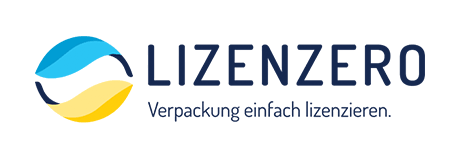EU plans new regulations for packaging: The PPWR at a glance
Content:
- What is the aim of the PPWR?
- What measures does the PPWR provide?
- When will the PPWR come into force?
- What is the potential of PPWR?
The EU has many new plans to drive forward the sustainability of packaging. This is particularly evident in the draft Packaging & Packaging Waste Regulation (PPWR), which was published at the end of November 2022. This sets out requirements for packaging and packaging waste from all materials placed on the European market. It also includes requirements for packaging design, specifications for reusable packaging and waste management. The special feature: The current EU directive (EU Packaging Directive 94/62/EC) is implemented differently by each member state and, as the word suggests, serves as a "directive" for laws at national level. The planned PPWR, on the other hand, is a regulation. This means that the provisions contained in the PPWR would come into force uniformly in all 27 EU member states. In contrast to a directive, this does not allow member states any room for manoeuvre to adapt European law to national circumstances.
|
Update: The PPWR was published within the Official Journal on 22.01.2025. It enters into force 20 days after publication on 10.02.2025. A transitional period of 18 months will then begin until the regulation applies. This means that the new packaging obligations will apply in summer 2026. |
What is the aim of the PPWR?
The aim of the PPWR is to significantly reduce the negative environmental impact of packaging in the European Union. To this end, resource consumption and packaging waste are to be generally reduced and the circular economy promoted. Various measures are listed in the PPWR for this purpose.
What measures does the PPWR provide?
The PPWR contains some important measures that would bring about major changes if it were to come into force in this form. From 2030, for example, packaging may no longer be put into circulation if it does not fulfil certain minimum requirements for recyclability. In addition, the weight, volume and empty space of packaging will be reduced to the necessary minimum. Packaging that aims to "increase the perceived volume of the product" (e.g. through a double bottom) will be banned. Shipping to other EU countries could also see some changes.
An overview of some potential changes:
- Avoidance of packaging waste: The regulation sets specific targets for the prevention of packaging waste. This means that retailers must take measures to reduce the amount of waste generated by their packaging.
- Recyclability of packaging: The PPWR sets out minimum requirements for the recyclability of packaging. Retailers must then ensure that their packaging is designed in such a way that it can be recycled.
- Use of recycled materials: The regulation requires the use of recycled materials in certain packaging, particularly plastic packaging. Retailers may then only use packaging that contains a certain proportion of recycled material.
- Labelling and information: The regulation sets out requirements for the labelling and information of packaging. This includes, for example, the labelling of recyclable packaging or the provision of information on the correct disposal of packaging.
- Declarations of conformity: The PPWR requires distributors to draw up comprehensive declarations of compliance at packaging level.
- Obligation to appoint an authorised representative: Companies that distribute packaging in a Member State and have their registered office outside that Member State are obliged to appoint an authorised representative. The authorised representative acts as the contact person and representative of the company in relation to its obligations under the PPWR.
- Promotion of reuse systems: The PPWR sets out measures to encourage the use of reusable packaging. This includes incentives for manufacturers and retailers to set up and use reusable systems.
When will the PPWR come into force?
The following steps are still outstanding until the PPWR comes into force:
- January 2025: Publication of the PPWR in the Official Journal on 22.01.2025
- February 2025: PPWR comes into force on 10.02.2025
- Summer 2026: Start of validity of PPWR regulation and packaging obligations
- February 2029: Article 67(5) of the PPWR on single-use plastics comes into force
Companies should continue to monitor developments closely and prepare for the upcoming changes.

What is the potential of PPWR?
The regulation plays a crucial role in reducing plastic, as packaging accounts for the majority of plastics produced in the EU. The PPWR can help reduce the use of resources for packaging and reduce waste and pollution. It could also have a significant impact on avoiding unnecessary packaging and/or not producing it in the first place. It can also ensure that reusable packaging becomes the new standard instead of disposable packaging.
At the same time, however, it cannot be denied that the PPWR, as it currently stands, would be accompanied by increased administrative and monetary costs, which could become a major burden and barrier to shipping to other EU countries, especially for small retailers. It is therefore crucial that it is adapted and taken into account for all retail sizes.



